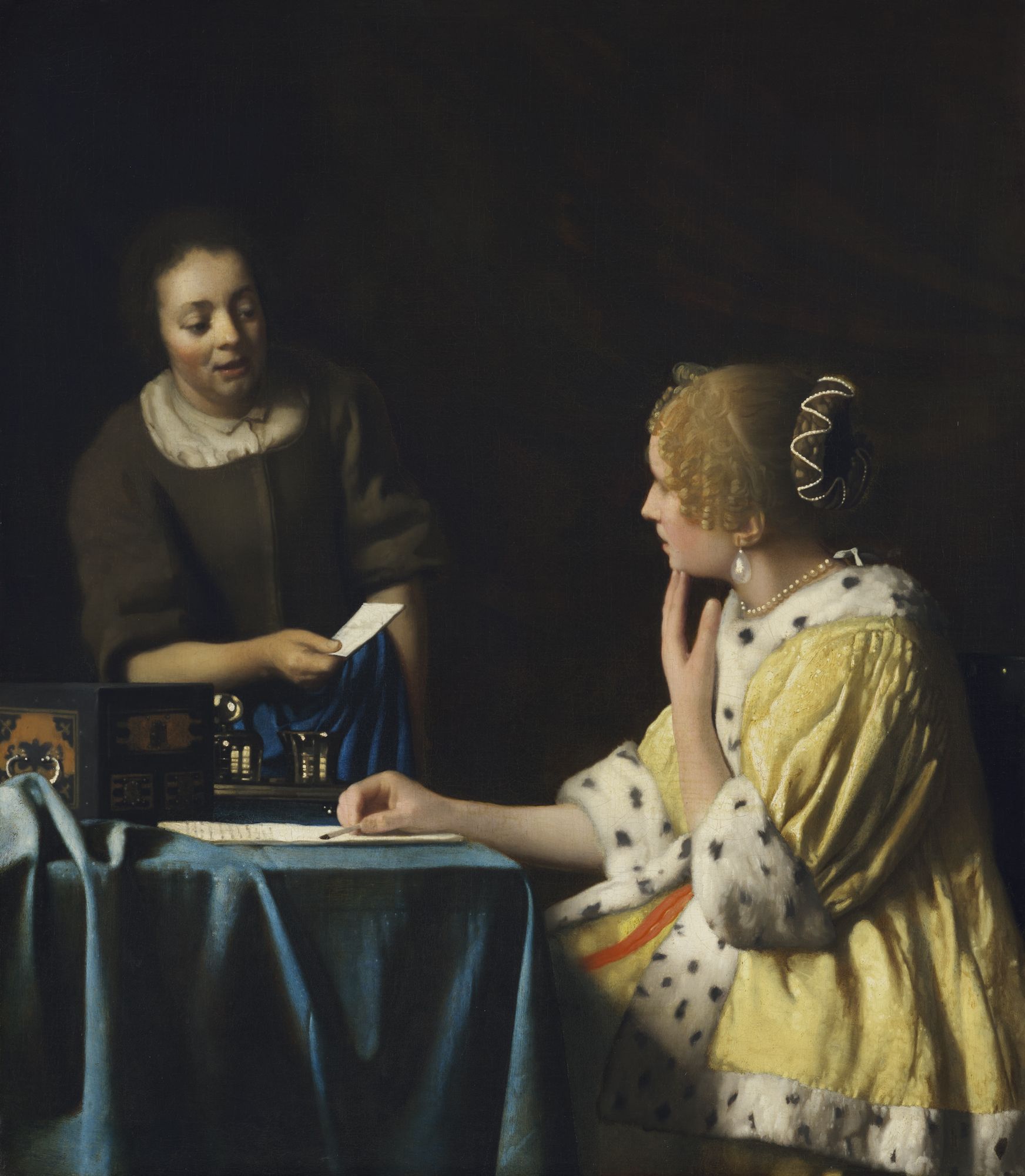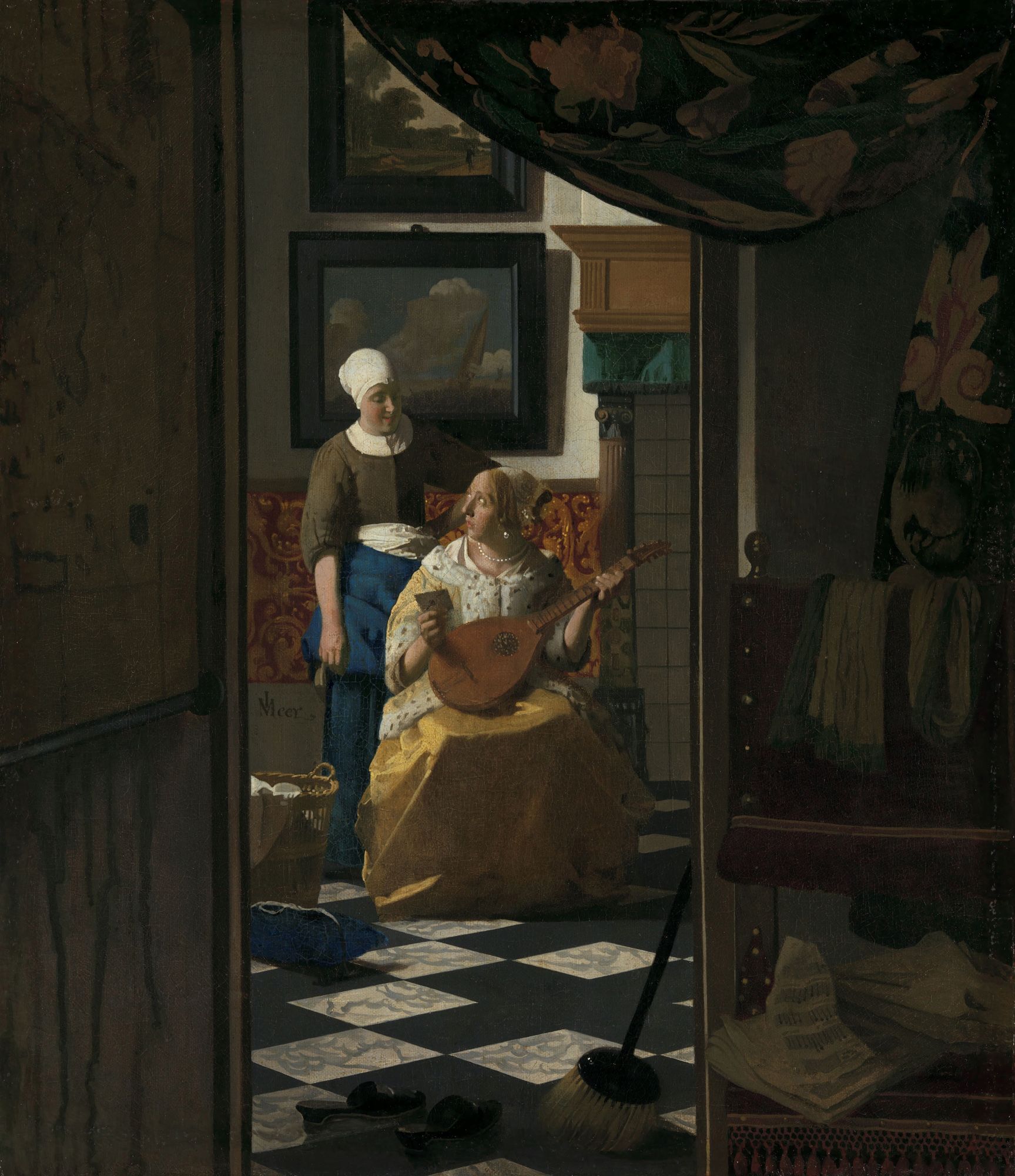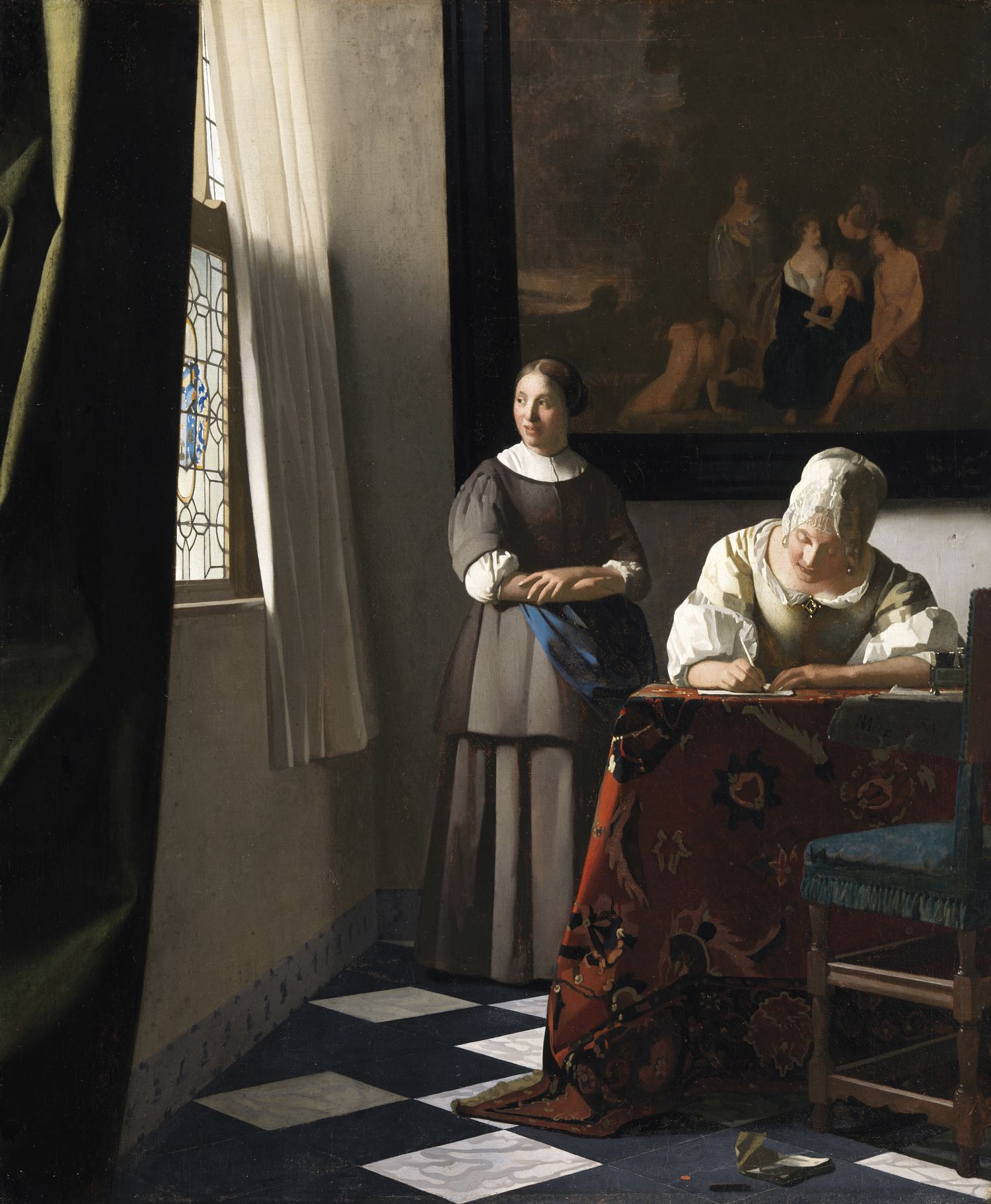“I know how difficult it is. Everyone wants your Vermeer.”
So said Axel Rüger, the director of the Frick Collection, when thanking the National Gallery of Ireland in Dublin and Amsterdam’s Rijksmuseum on the first day of “Vermeer’s Love Letters,” which is on through Aug. 31.
Their paintings, respectively “Woman Writing a Letter With her Maid” and “The Love Letter,” are on display with “Mistress and Maid,” the last artwork acquired by Henry Clay Frick before his death in 1919.
The industrialist bequeathed that Vermeer along with the rest of his remarkable collection of European paintings, sculptures and decorative arts, and his gilded-age home on Manhattan’s Fifth Avenue, at 70thStreet, for the enjoyment of the viewing public.
The three-painting show is the first dedicated to Vermeer in New York since 2001 and celebrates the reopening of the Frick at its home this past spring after a lengthy hiatus elsewhere while its new Special Exhibition Galleries were being built.
“Of the approximately three dozen works by Vermeer surviving today, six explore reading, writing and exchanging of letters, popular subjects in the artist’s circle of Dutch painters,” the Frick Collection said in a statement. “The three works united in the exhibition share a particular focus on women in the domestic sphere: ladies and their maidservants.”
The three were all part of history’s biggest ever Vermeer show at the Rijksmuseum in 2023, which featured 28 of the known works. This is the first time, however, that they’ve been presented close together.

“Mistress and Maid” (The Frick Collection).
“Seeing them side by side has some visual consequences,” said the guest curator, the University of Amsterdam’s Robert Fucci, at a media briefing on the exhibition’s first day.
Visitors to “Vermeer’s Love Letters” can also see the Frick’s two other Vermeers and, of course, its collection more generally in what is now a greatly expanded space following the renovations. Museum staff suggest, too, that they travel up a few blocks to see the five Vermeers at the Metropolitan Museum of Art. The 10 viewable now on the Upper East Side constitute more than a quarter of the known corpus (37, although some argue for 35) of the painter born in the city of Delft in the Dutch Republic in 1632 and who died there in 1675.
Painter and writer Julian Bell commented in a 2011 essay that Vermeer gradually became over the span of a century a “public obsession,” and that in part could be explained by his having a “mind-boggling technique for transferring [visual sensations] from eye to canvas as if without the hand’s intervention.”
In her review of the current show for the New York Times, Deborah Solomon wrote, “In the past generation, he has inspired an opera; a novel that became a film in which Scarlett Johansson plays a demure maid-model posing for the painting ‘Girl with a Pearl Earring’; and an ever-growing research industry that has set well-respected scholars at loggerheads over the meaning of his work.”

The Love Letter” (Rijksmuseum).
The reviewer herself got in the middle of one debate, saying that the current show “asks that we view the protagonists of the three paintings as sly correspondents caught up in romance, their maids aware of their feelings and consigned to the role of go-between,” all of which she deemed a “highly speculative and iffy premise.”
Solomon offered alternatives for “Mistress and Maid” whose title, as with the others, is a 20th century add-on: “Who is the letter from? Perhaps it’s from a cousin in Amsterdam sharing news of his family’s ordeal in the bubonic plague of 1665. Or a local merchant informing the woman that her artist-husband has run up a catastrophic debt by splurging on lapis lazuli, the expensive stone that Vermeer used to achieve a radiant blue. Or perhaps the maid has jotted the note herself to announce that she is quitting her job.”
Fucci, the author of the 112-page “Vermeer’s Love Letters” catalogue, defends the “courtship” theme of the three paintings as the one that makes most sense overall, and he stresses in particular that beginning in the 1650s, there was a cultural shift in attitudes among the Dutch. “This was an era when women especially were increasingly given more autonomy in choosing their life partners,” he said at the media briefing.
Vermeer’s own mother-in-law objected to her daughter’s choice of husband, but stopped short of preventing the marriage. It’s believed that the painter’s conversion from Protestantism to his wife’s Catholicism helped ease the path to the altar.
Vermeer worked as an art dealer and made maybe two paintings per year. After French armies invaded the Dutch Republic, the economy and society went through troubled times, and stress over his indebtedness, his wife Catharina Bolnes claimed, put Johannes in an early grave.
It’s long been known that the show’s Dublin painting was one of the two that she used to pay off a debt to their baker, and scholarship has now revealed that the Amsterdam painting was the other. It was an outstanding bill for three years’ worth of bread in a household that had 11 surviving children (10 were minors when Vermeer died) as well as a few adults, including Catharina’s mother, Maria Thins. The recipient of the two paintings was no ordinary tradesman, Fucci said — he was Delft’s master baker, and himself an art collector. And so Catharina’s condition that she have the opportunity later to buy them back strongly suggests these paintings had been personally very important to her and her late husband. “She does not, however, appear to have regained them,” the show’s wall text says.
No luck either for the Isabella Stewart Gardner Museum in Boston, whose Vermeer, “The Concert,” was taken by thieves late one night in 1990 with 12 other artworks, and hasn’t been seen since.
Not mentioned in any of the coverage surrounding the show is the fact that “Woman Writing a Letter with her Maid” was stolen twice – both times in raids at its long-time home at Russborough House in County Wicklow. The first was led by upper-class Provo recruit Rose Dugdale in 1974, though the 19 paintings taken, Vermeer included, turned up eight days later in a cottage in County Cork.
The second was organized in the following decade by Dublin crime boss Martin Cahill, aka the General, and this time the masterpiece was gone for seven years. It was recovered in a 1993 sting operation involving the Garda and other law enforcement agencies, at the airport in Antwerp, Vermeer’s mother’s hometown. The painting, it turned out, had been donated to the Irish state during its long absence.
It says something about Vermeer perhaps that those heists are among the least interesting things in the three paintings’ backstories.
Vermeer, though a well-respected painter in Delft during his lifetime, was an obscure figure for close to two full centuries after his death. The French journalist and art critic Théophile Thoré-Bürger is credited with rediscovering the Dutch painter for the art world with an essay in 1866. Early on in his new-found fame, enthusiasts hailed the “photographic” quality of Vermeer's work.
This has become more of a technical and technological issue in recent decades. As Solomon wrote in her Times review, “He is believed to have used lenses and other optical devices to compose his paintings, as the artist David Hockney and others have argued persuasively.”
The most persuasive is an architect whose book on the subject was received very positively by the art world a quarter of a century ago. In a 2001 essay for the New York Review of Books, prominent art critic Sanford Schwartz said, “In Philip Steadman’s study of Vermeer and optical devices, it’s hard not to sense that this artist has an uncanny relationship with photography—even that he, in a quest to nail down exactly the way light is part of how we see, somehow ‘invented’ photography.
“It’s the lens-like quality of Vermeer’s art that gives it its otherworldly quality and also its creepiness, its property of being a step away from a photographically derived modern illustration.”
Whatever about that or any other issue, most would likely agree with Solomon that “there’s no such thing as spending too much time with Vermeer, and the Frick show offers a rare chance to reconvene with prized works.”
Aimee Ng, a leading curator at the museum, said on its first day, “In classic Frick style, this is an exhibition that encourages, fosters, invites close looking, deep thinking and simply marveling at staggering works of art.”
“Vermeer’s Love Letters” continues (six days a week, Wednesdays through Mondays) until Aug. 31 at the Frick Collection, 1 East 70th St. at Fifth Avenue; 212-288-0700; frick.org.








